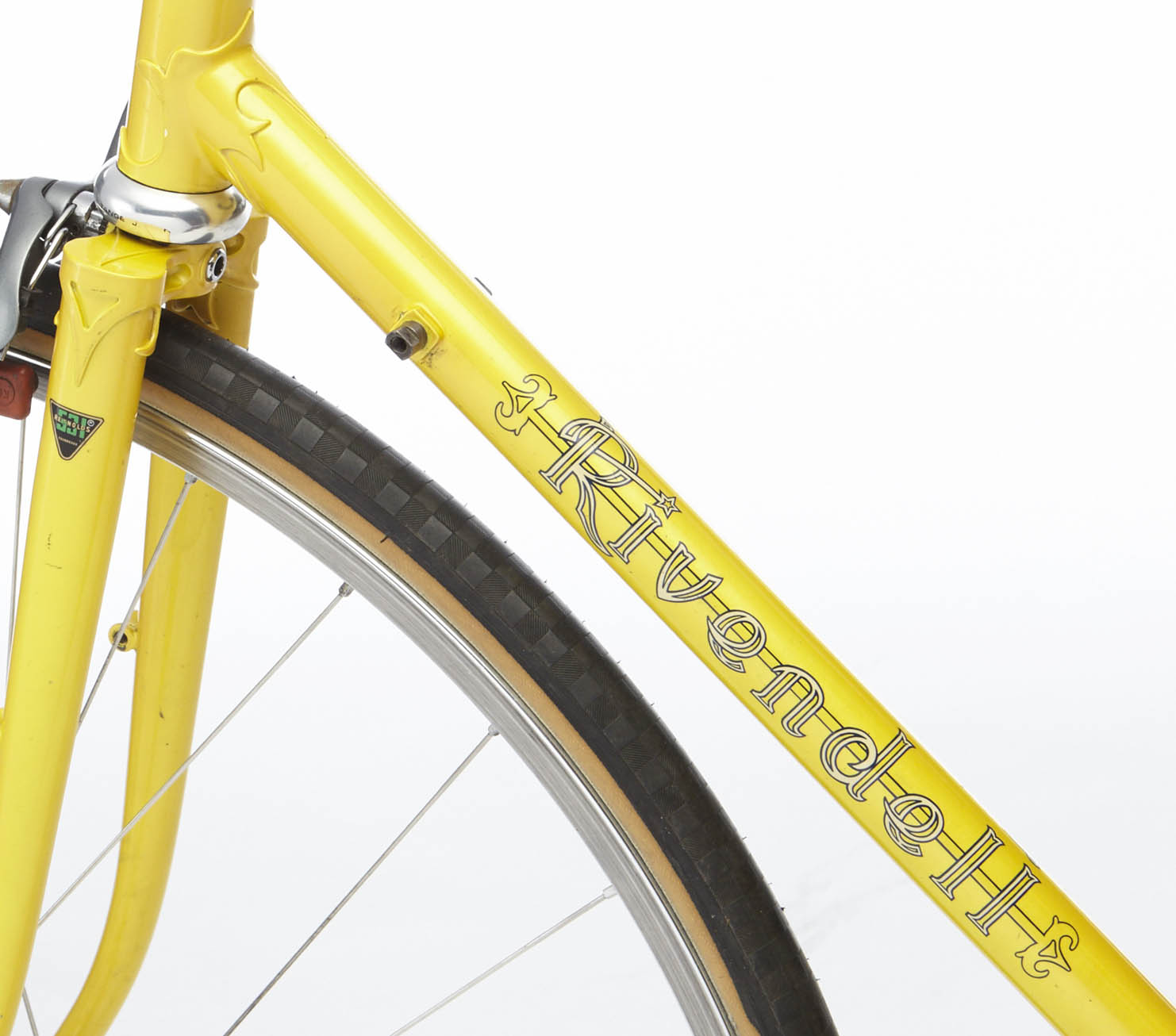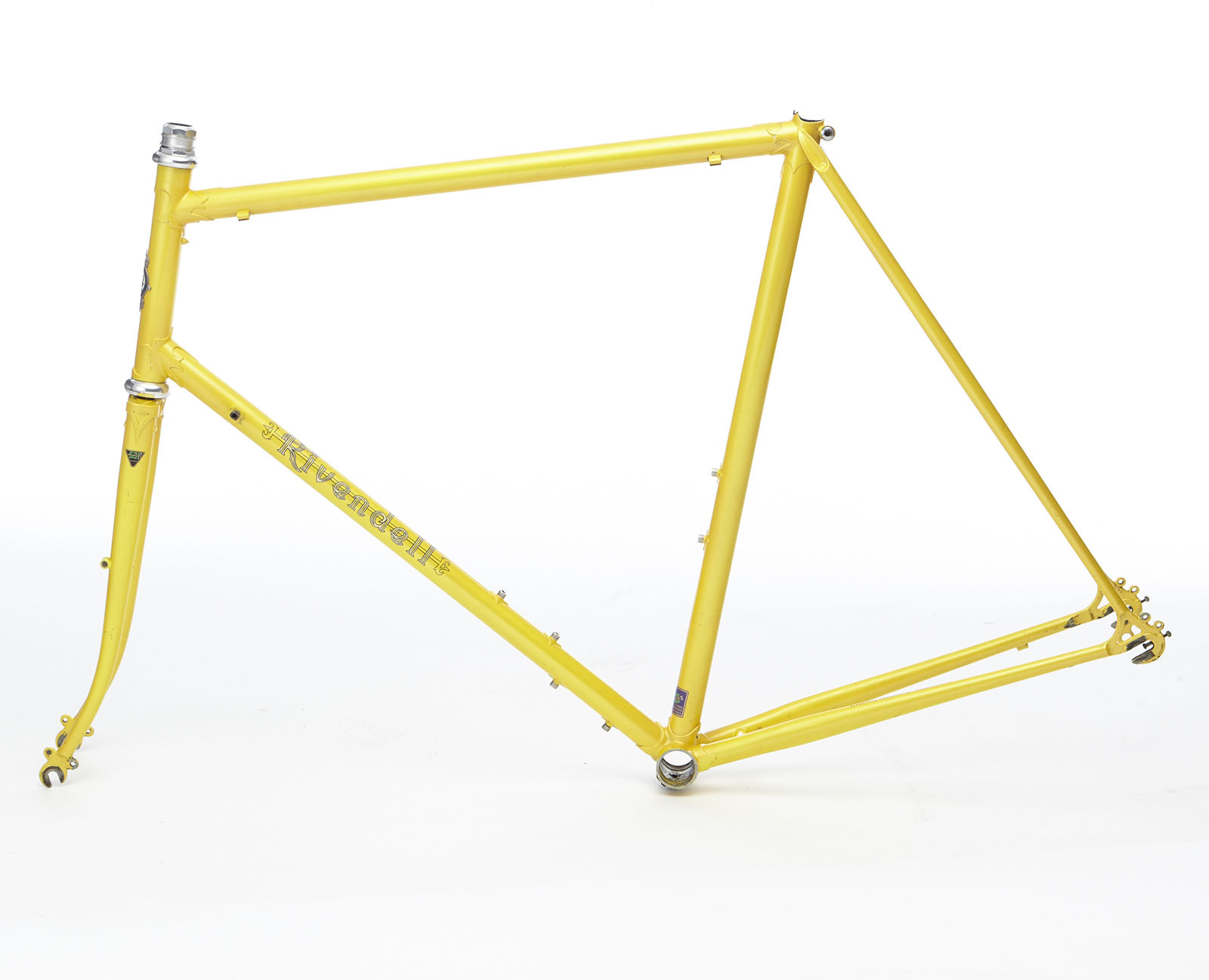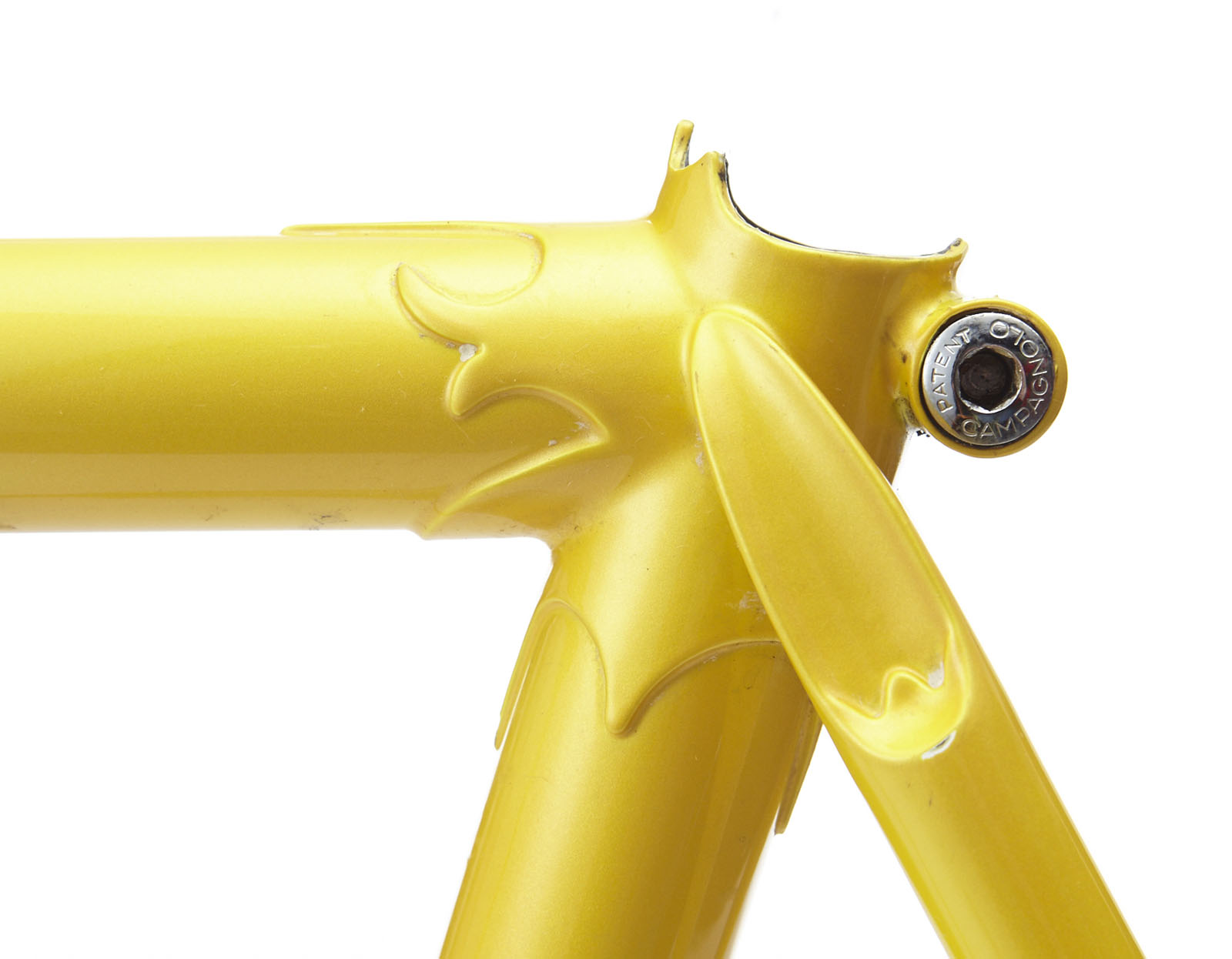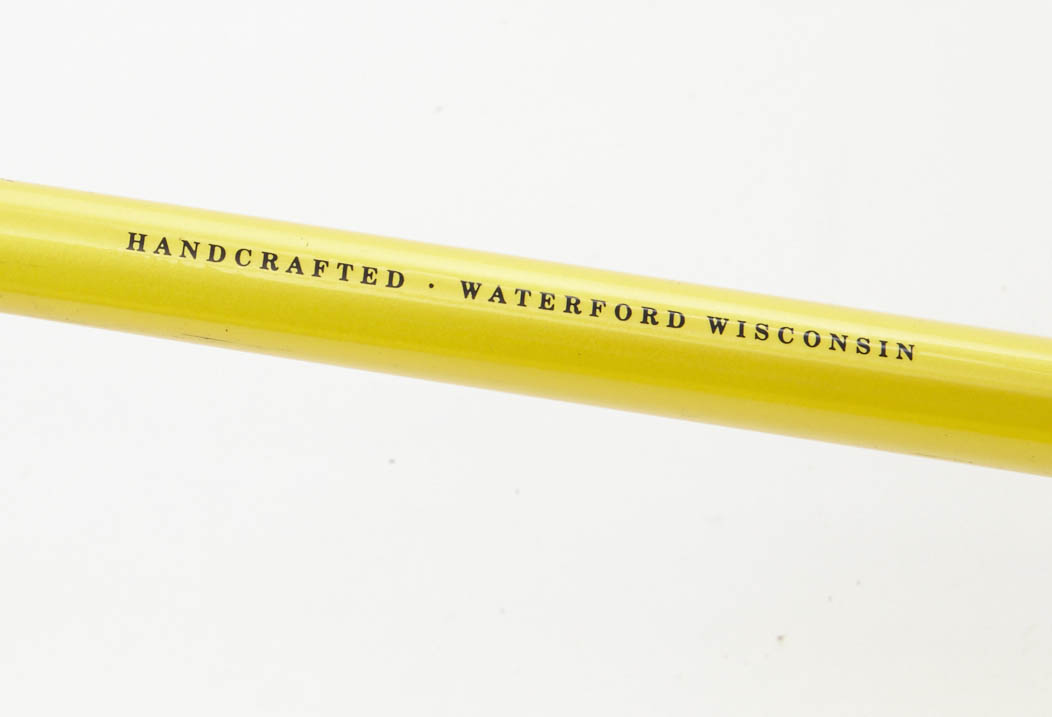1995 Rivendell: Turning the Tide

When Bridgestone USA closed in 1994, many mourned the loss of what they saw as the last bastion of sensible design in the quickly changing world of bicycles. They rejoiced when later that year, Bridgestone’s marketing manager Grant Petersen started Rivendell Bicycle Works. The new company’s first project were three hand-built frames, the Road, Mountain and All-Rounder.

Looking back, it is hard to appreciate the significance of these first Rivendells, because what they championed has become commonplace. They were a turning point in the decline of custom steel bicycles in the U.S. By the early 1990s, steel was rapidly being replaced by aluminum and titanium among high-end bikes. Almost overnight, steel was relegated to inexpensive production bikes. Sure, custom builders still built beautiful steel bikes, but more and more, they seemed like hold-overs from a glorious past when great champions still won big races on steel bikes. It was a dying craft – the idea that young cyclists might pick up the torch and become framebuilders seemed almost laughable.

Then along came Rivendell and made steel cool again. “Steel is still the best choice for frames,” was the message, “and now steel is better than ever before!” It was a breath of fresh air welcomed by all who harbored doubts about the “newer is better” ethos that had taken over the bike industry. For Grant Petersen, it may have been the logical next step – to take the customer base he had built at Bridgestone in a more up-market direction – but it also legitimized and revitalized the entire genre of hand-built steel bikes.

The Rivendells were also the first bikes in more than a decade to feature a headbadge. Fitting for a purely ornamental part, the headbadge was perhaps the most over-the-top part of the frames, with cloisonné inlays that were devilishly difficult to produce. In the days before Internet marketing, Rivendell published the Reader, a zine that detailed all the trials and tribulations of the young company. It is telling about Rivendell’s influence that headbadges have become a must-have accessory, even on mass-produced frames.

During his Bridgestone days, Grant had been a defender of lugs against the encroachment of less-expensive TIG-welding. At Rivendell, he coined the slogan: “I ride lugged steel, and I vote”. The lugs of the first “Road” frames were based on a design Richard Sachs had carved for Bridgestone. They had lingered in a drawer for years, perhaps because they would have been too difficult to braze on a production line. Playful and yet elegant, they’ve rarely been bettered. They were perfect for a bike named after a mythical place taken from Tolkien’s Lord of the Rings. With that headbadge and those lugs, it almost seemed like the frames were made by elves.

The elves who made the first Rivendells lived in Waterford, Wisconsin, where Richard Schwinn had resurrected the old Paramount shop after the first of Schwinn’s many bankruptcies. The Rivendell frames were built to order with a wide choice of sizes, braze-ons and colors. The basic frame design was fixed, an evolution of the much-loved Bridgestone RB-1. To many, the early Rivendells were the bikes that Bridgestones should have built, had price not been a concern.

These first Rivendells were dream bikes of their era. The tubing was the best of the best, Reynolds’ mythical 753, the first “supersteel”, custom-drawn to Rivendell’s specifications. Grant even had special stickers made, with French lettering referring obliquely to the great French constructeurs, recently discovered by another Grant (Handley), in whose bike shop Planetary Gear Grant Petersen sometimes hung out.
The early Rivendells were as sensible as they were beautiful. They were designed for performance. Clearances were optimized to fit the widest tires with the then-available brakes. A head-tube extension enabled a comfortable riding position. Braze-ons for racks allowed converting the bikes for touring. These were bikes intended to be ridden, bikes that promised to go wherever their riders wanted to take them – racing, touring, exploring, even commuting.
Everything that followed – the steel bikes from Surly, Soma, All City, etc.; the renewed popularity of handbuilt custom bicycles that since has swept the world; the comeback of classic components; even Compass Cycles – can trace its roots to the moment when Grant Petersen stood up and said: “I love steel and lugs. Why not?”
Further reading: The full story of the first Rivendell Road lugs is told in the Summer 2017 Bicycle Quarterly.


